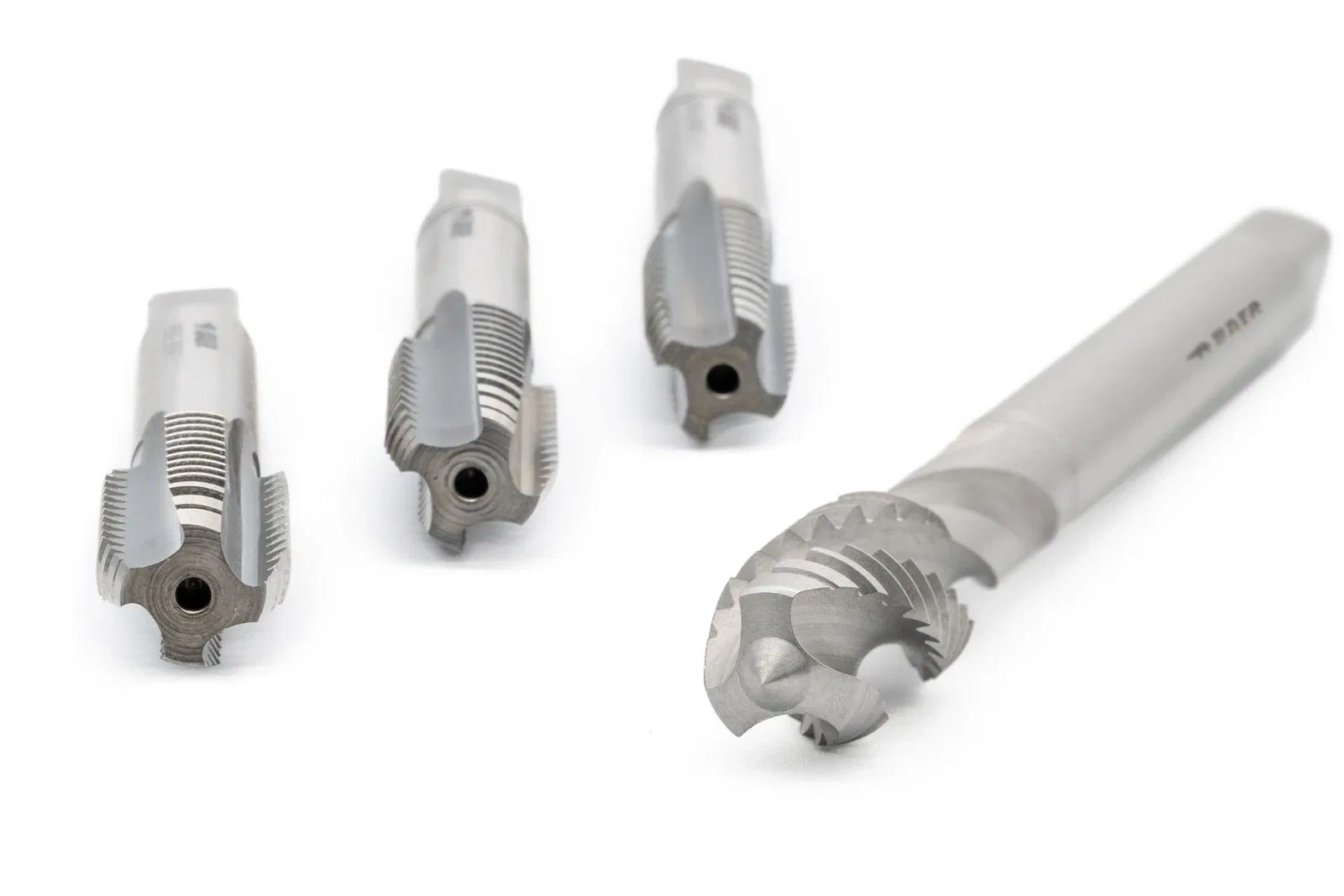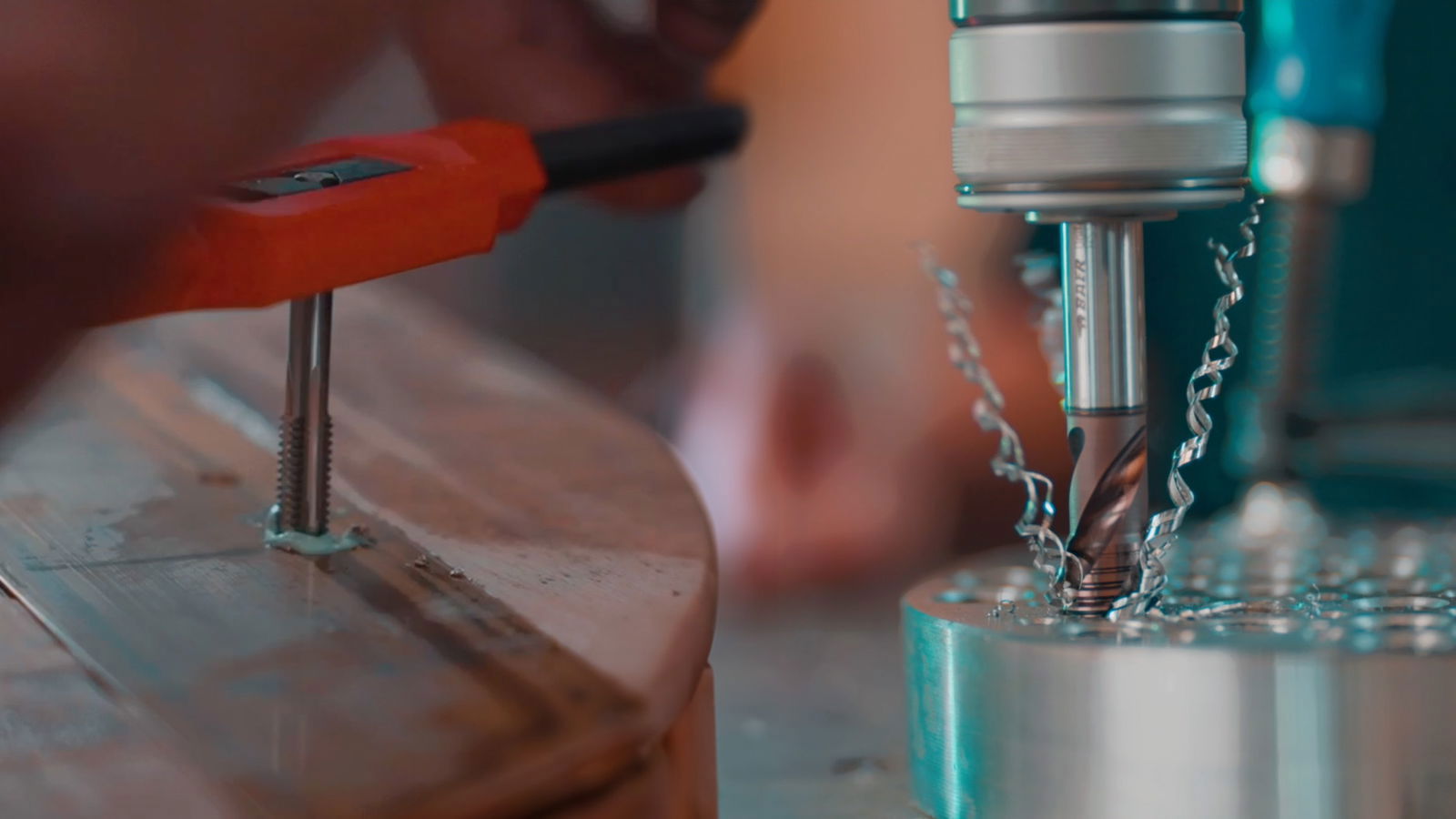
Difference: hand taps & machine taps
If you're new to the world of threading and tapping, you've stumbled upon the right blog post. We're starting from scratch, giving you a comprehensive overview of what a tap is, how to use it, and the difference between hand taps and machine taps.
What is a screw tap?
A screw tap is a specialized tool used to create threads by turning it into a pre-drilled hole. In the process, the tool cuts material from the surrounding substance.
A screw tap has a cylindrical shaft ending in a square shape. The head features the threading part, flutes, and the cutting edges in between.
Key features of the screw tap head include:
- Thread Profile: This determines the type of thread. It consists of dimensions like diameter, pitch, and flank angle.
- Lead Form: This indicates at which thread turn the full profile is reached.
- Flutes: These can be straight or helical and are essential for chip evacuation.
Taps can be categorized into hand taps and machine taps. To understand their differences and respective applications, let's delve deeper.
Hand taps vs. machine taps: Introduction to hand taps
Hand taps allow threading without machinery, which is the most apparent difference between them and machine taps. This feature offers several advantages. For DIY enthusiasts, hand taps are an affordable way to familiarize themselves with a new skill without making significant investments. Especially if you don't have a fully-equipped workshop and only need to cut a few threads, this is an ideal solution. The independence from power and machinery also grants flexibility. Hand taps can be used in unconventional places or hard-to-reach spots.
Hand taps typically come in sets of two or three tools. These taps have a sequence in their cutting action and must be used in the correct order.
- Taper Tap: Long lead, incomplete teeth, marked with one ring.
- Intermediate Tap: Medium lead, more defined teeth, marked with two rings.
- Finishing Tap: Short lead, fully formed teeth, unmarked.
Here's the idea: the taper tap removes the most material, creating about 65% of the thread profile. The intermediate tap brings this to 85%, and the finishing tap completes the job. This step-wise approach makes it easier to produce a straight thread with manageable effort. It also reduces the stress on each tap, prolonging their lifespan.
For standard threads with a coarse pitch, all three taps are needed. For fine threads with a tighter profile, only two tools are required. Sets are available for standard steel, high-strength steel, and specifically for stainless steel processing. For manual tapping, besides the taps, you'll need a holding tool, usually a tap wrench or a ratchet tool.

Machine Tap Explained: How is it different from a hand tap?
Tapping by hand can be time-consuming. That's why in industrial manufacturing, machinery is predominantly used. Machine taps are specifically designed for this, and you can't just use a hand tap in their place. Unlike hand taps, machine taps create the thread in one single operation. They require rigid and accurate guidance, as they can break easily. Hence, using machine taps with handheld tools isn't recommended.
Machine taps differ based on the type of hole they are used in. A through hole runs entirely through a workpiece, while a blind hole goes only part-way in. Machine taps come in numerous designs, e.g., for specific materials or to create left-hand threads. Additionally, the flute shapes, and consequently the chip evacuation direction, can vary.
The unique case of forming taps
To bridge the gap between hand taps and machine taps, there's a third tool that combines the features of both: the forming tap. While technically a machine tap, it's also suitable for manual use. Its straight flutes make it sturdy, reducing the risk of breakage. While practical and versatile, it does have downsides. Although faster than a hand tap, it requires more effort and can be challenging to use without machinery.
Comparing hand taps and machine taps: a summary
A hand tap is versatile and allows for threading without extensive workshop equipment. It's slow-paced but offers the advantage of precision and care, especially for beginners. However, for regular threading, this manual method becomes tedious.
On the other hand, the machine tap excels in rapid, repetitive operations, essential in industrial settings. Its use is, however, tied to having the necessary machinery and expertise, making it more of a professional's tool.
The forming tap tries to bridge the gap but has its limitations. If you're starting, a hand tap set might be the best choice.
Now that you're clear on the differences between hand taps, machine taps, and forming taps, feel free to check out the tap manufacturer BAER's online shop. Find all these tools (and more) at fair prices and unmatched quality!
